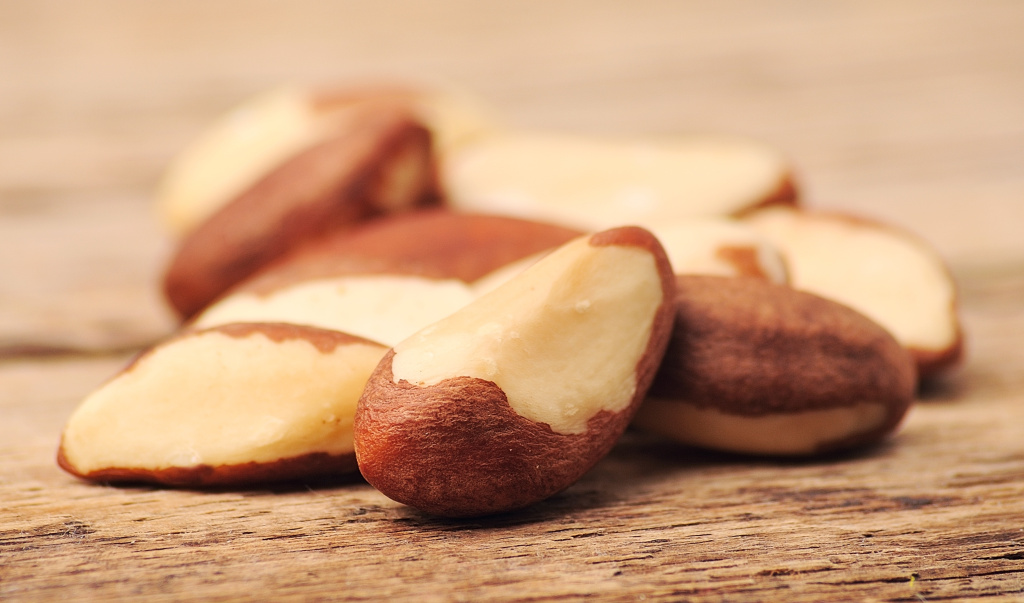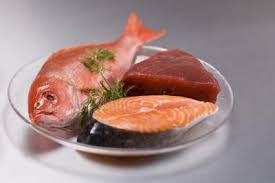Often considered a ‘healthy’ snack, nuts have raised a bit of concern for myself lately. Perhaps, they should do the same for you. Here we’ll take a look at the nutritional component of nuts and some practical implications on improving the quality of our nutrition.

THE GOOD:
Most nuts provide a good amount of nutrients
THE BAD:
Nuts can easily be over-done. A few handfuls could easily add up to over 600+ calories, primarily in the form of fat. They are also an incomplete protein source which means they do not contain all the essential amino acids.
THE UGLY:
The healthy fats that you think you’re getting could be a lot less than you think…
Thinking More Critically
Our population is overwhelmed with nutritional information, some good and more not so good. General claims such as “get your healthy fats,” “eat a balanced diet,” and “get your fruits and vegetables.”
The problem with these claims is that they just raise more questions. What healthy fats? What’s a balanced diet? What fruits and what vegetables? How much do I need?
I’ve come across this awesome quote that’s 100% true in my experience. In undergrad studies, your basically spoon-fed information in which you regurgitate out on a test or project. In graduate studies, you are asked to challenge things, ask questions, and thus learn in the most effective way possible.
Let’s all put on our graduate style thinking caps and get into the nittie grittie on fats through the lens of nuts.
Polyunsaturated Fatty Acids (PUFA)

Overview:
These are considered by many to be “good fats.” But what makes them good fats. They have been shown to decrease inflammation levels, decrease cardiovascular heart disease (CHD), lower lipid and triglyceride levels, reduced risk of heart attack, etc.
Fats used to be demonized as the nutrient to avoid as it was thought to increase obesity potential. Thankfully, there are numerous studies that point toward the benefits listed above and we are transitioning out of a low-fat approach to diet. Now, the emphasis is on the type of fat rather than overall fat intake. Dietary fat plays a critical role in the body and is necessary for optimal health and function but not all fats are created equal.
Hu et al along with many others have demonstrated that the type of fats we eat make a difference in determining risk of diseases. This study also states that increasing intake of Omega-3 fatty acids from fish or plant sources significantly lowers risk of CHD. This will become more clear later.
Nuts & Bolts:
So in a nutshell (pun may have been intended), most would consider nuts to be a great snack. I sure love them. I’m chomping on a mouthful now (un-blanched almonds if you must know, 2 oz but who’s tracking?). But let’s dig a bit deeper and not merely scratch the surface.
PUFAs are considered to be essential fatty acids (EFAs). They must come from the diet as our bodies cannot produce them on its own. You may have heard of Omega-3s, Omega-6s, and Omega-9s. We will forgo the Omega-9s in this article as they are a monounsaturated fatty acid (MUFA) and are non-essential.
Omega-3
Two groups we will need to discuss here: long-chain and short-chain Omega-3s. Both are considered as “good.”
The short-chain are of primary concern. Two crucial fatty acids that play pivotal roles in overall health/function are EPA and DHA. We will cover these below. What we need to know for now is that the short-chain Omega-3s, found in nuts, are primarily in the form of alpha-linolenic acid (ALA).
This is a problem. Although, ALA can be converted into our essential DHA and EPA, it does so very inefficiently. Dr. Mercola claims that the conversion is less than 1%. [1] ALA is essential and must come from diet, but it is needed in relatively small amounts and can be synthesized from it’s long-chain counter parts.
The two long-chain Omega-3 fatty acids of primary concern for this post are eicosapentaenoic acid (EPA) and docosahexaenoic acid (DHA). EPA and DHA are found mostly in animals (fish, shellfish, and krill). They are sometimes referred to as the “anti-inflammatory” fats but provide many other benefits. (i.e. EPA and DHA make up the majority of the eye and brain and are critical in developing babies).
These short-chain fatty acids (ALA) are found mainly in plant sources, and nuts. This raises the question, are we getting as much of the benefits from the good fats as we thought?
Omega-6
The short-chain Omega-6 come in the form of linoleic acid (LA). These are pretty common in the typical American diet. They are found in corn oil, sunflower oil, soybean oil, and the all too popular canola oil.
The long-chain form is arachidonic acid (AA). These are important as they combat infection, regulate inflammation, promote blood clotting, and allow communication between cells. These FAs are found in liver, egg yolks, animal meats, and seafood.
A meta-analysis performed by Vedtofte et al showed a lower risk of CHD when PUFA replaced saturated fatty acids in diet. However, the same decrease risk was not shown with a higher LA content.
Diets high in Omega-6 have a greater potential to produce inflammation. Omega-6 fats are considered “pro-inflammatory,” meaning that they promote an inflammatory response. Omega-3 remains neutral and thus the balance of these fats is critical for optimum inflammation levels.
Don’t right off Omega-6 and label them as “bad” due to their pro-inflammatory properties. Proper inflammation levels are necessary in the body. It is only when inflammatory levels become too high that it becomes a problem. As with many things in the human body, there needs to be balance.
The Ratio
Omega-3s and Omega-6s are essential to the body and must come from diet. Most people do not have an issue getting sufficient Omega-6. Where they lack is the amount of Omega-3.
In a perfect world, the ratio would be 1:1. You would get an equal amount of both. This would be too far-fetched to suggest and many wouldn’t even try. A more realistic ratio would be 2:1 (omega-6 to omega-3 respectively).
For those who do not have a diet high in seafood, the balance may be a bit off. Seafood seems to be the best way to get your omega-3s from natural sources. Take a look at the below table to get an idea of the ratio of Omega-3 to Omega-6 in different foods.
List of Foods with Ratio of Omega 3, Omega 6
| Food | Omega-3 | Omega-6 | LaToof's Grade |
|---|---|---|---|
| NUTS/SEEDS | |||
| Almonds | 6 mg | 12053 mg | D |
| Pistachio | 254 mg | 13636 mg | D |
| Macadamia | 206 mg | 1296 mg | C |
| Brazil | 18 mg | 20564 mg | D |
| Walnuts | 9079 mg | 38092 mg | D |
| FISH/SEAFOOD | |||
| Salmon (Atlantic/wild) | 2586 mg | 172 mg | A |
| Tuna (Blue Fin) | 1664 mg | 68 mg | A |
| Trout (raw) | 1068 mg | 224 mg | A |
| Halibut | 669 mg | 38 mg | A |
| Oysters (Pacific/raw) | 740 mg | 32 mg | A |
| Crayfish | 184 mg | 76 mg | A |
| LAND MEATS | |||
| Beef (grass-fed/lean) | 23 mg | 90 mg | B |
| Pork (lean) | 10 mg | 300 mg | C |
| Chicken (white meat) | 76 mg | 690 mg | C |
| Bison | 80 mg | 250 mg | B |
| Venison | 100 mg | 220 mg | B |
| Whole Egg (scrambled) | 154 mg | 1916 mg | D |
*Each food is listed in 100g amounts.
Below I have outlined my grading system. Please note that this system only takes into consideration the ratio of Omega-3 to Omega-6 fatty acids, as many of the nuts listed are incredible dense in various other nutrients.
LaToof’s grading system:
A. These sources have double the Omega-3s compared to Omega-6s content. These are great choices and should be at the top of your list.
B. I’ve never been one to complain about a B and you shouldn’t raise too much of a fuss with these sources either. These are close to that 2:1 ratio.
C. Limit as much as you can but don’t get all crazy about it. After all you do need Omega-6 in your diet.
D. You can get away with eating these. However, I wouldn’t make it a habit. These are very easy to over-do and can quickly through off the proper balance.
Keep in mind that these can all fit in your diet and serve a purpose. The grading system is strictly based of the Omega ratio content. These foods provide many other key nutrients and should be part of your diet. If you’ll note, one serving of fish can greatly improve your balance of PUFA omegas and allow you to enjoy the others which are not as equally balanced.
Practical Implications
1. Eat More Fish
Try to increase your fish intake more throughout the week. As noted above, most fish provide a great ratio of Omega-3s to Omega-6s. If you’re not a big seafood lover, just try to incorporate it one meal a week. Get creative and find recipes that you’ll like. Often times you can discover a delicious recipe that satisfy your taste buds. Check out my cookbook and see what’s in my arsenal.
2. Take Fish Oil
If you absolutely cannot eat fish, grab a fish oil supplement. These are great ways to fix the balance of Omegas. Don’t worry about fishy burps or other unsubstantiated claims. They work and they’re effective and if you don’t settle for the cheap corner store ones, you won’t have to worry about the fishy burps either.
3. Be Mindful of Nut Intake
As you can see from the above chart, nuts do not provide sufficient ratios of the critical EPA and DHA fatty acids. Although very beneficial, nuts are very easy to over do and rapidly throw off the balance of Omega-3 and Omega-6. Furthermore, the omega-3 that you are getting from nuts are inefficiently absorbed.
Take Home Points:
#1 If on a high fat diet, ensure that the majority of your fat is coming from the proper sources with a better Omega-3, Omega-6 ratio.
#2 Limit your nuts and seed intakes.
#3 Be pro-active about your health and know what you’re putting into your body.
I love nuts. I will continue to eat them. However, moving forward I will be much more mindful of the amount I consume in relation to my other nutritional choices that day. Do not take this out of context and think that I am declaring nuts bad. As always, this must be determined on a situation by situation basis.
Now that I am aware of this information, I am responsible for using it to get myself into a state of optimal health. I hope this helps you to do the same.
Bonus Nick’s Picks Section:
#1. Macadamia
#2. Brazil Nuts
#3. Pistachios
#4. Almonds
#5. Peanuts (often considered not to be nut)
Works Cited
[1] Mercola, Joseph. (2011). The science is practically screaming… don’t make this trendy fat mistake. http://articles.mercola.com/sites/articles/archive/2011/11/11/everything-you-need-to-know-about-fatty-acids.aspx
[2] Taylor, Julianne. (2011). Omega 6 and 3 in nuts, oils, meat, and fish: Tools to get it right. http://paleozonenutrition.com/2011/05/10/omega-6-and-3-in-nuts-oils-meat-and-fish-tools-to-get-it-right/
Comment Rules: Please do not put your URL in the comment text and use your personal name or initials instead of company/business name (comes off as spam). Have fun and thanks for adding to the conversation!


